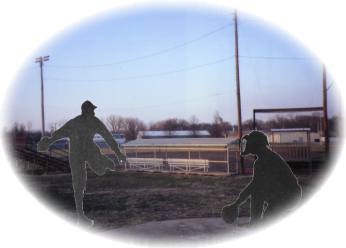
In 1871, Judge J.V. Coon of Elyria, Ohio, visited Blue rapids and took samples of gypsum back to Ohio for testing. It was found to be suitable for the manufacturing of plaster of paris. In 1872, he and a brother returned and set up the first machinery for processing gypsum. In the early 1900s there were four gypsum mines in operation. Today only one remains producing some of the purest gypsum in the world and estimated to supply gypsum for last at least one hundred years.
The Georgia-Pacific plant was constructed in 1958, the move being necessitated by the construction of Tuttle Creek Reservoir on the Big Blue River. The present plant opened in 1960. Over 100 people are employed, working between two and three shifts daily.
Gypsum has many uses. Some examples are wallboard, wall plaster, plaster of paris, fillers in abrasives, toothpaste, dental plaster, cement, and paint. Shipments are sent all over the world.
A large piece of gypsum rock is on display in the Fountain Park.